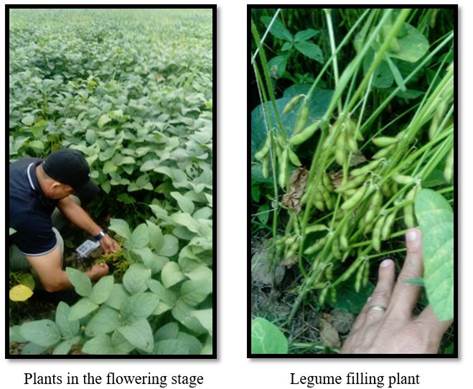My SciELO
Services on Demand
Journal
Article
Indicators
-
 Cited by SciELO
Cited by SciELO
Related links
-
 Similars in
SciELO
Similars in
SciELO
Share
Cultivos Tropicales
Print version ISSN 0258-5936On-line version ISSN 1819-4087
cultrop vol.41 no.3 La Habana July.-Sept. 2020 Epub Sep 01, 2020
Report of new cultivar
INIAP 307: Soybean variety (Glycine max L. Merril) in Ecuador
1Institución Universidad Agraria de la Habana (UNAH), Facultad de Ciencias Agrarias, carretera San José-Tapaste, San José de las Lajas, Mayabeque, Cuba
Developed by the National Institute for Agricultural Research (INIAP) through the National Short Cycle Oilseed Program, the variety obtained by PRONAOL during the period 1993-2003, comes from crossing, with the pedigree and was experimentally named as PROMSA line. It is characterized by its good productivity (4.46 t ha-1), resistant to lodging in the upper and lower basins of Rio Guayas (CRG).
Key words: crossing; line; productivity; fluvial basins
INTRODUCTION
Soy is of great economic importance in Ecuador and considered of good quality for the vegetable oils and concentrates industry, as well as in the preparation of balanced feed for animal feed, factors that influence the source of commercial and productive development. However, it is an agricultural product with low production, for which 80 % of the needs of the country's domestic market are imported. The INIAP through the National Oilseed Program has developed new national soybean lines and introduced to examine its characteristics in different areas of the country; leaving the INIAP 307 variety, with high yield, good quality seed, adequate plant height and load, characteristics that influence a favorable harvest.
Origin
This variety was developed by PRONAOL during the period 1993 - 2003, it comes from the crossing AGS-269 x UFV-10, with the pedigree it is 546F2-39-3-2M and experimentally it was named as line 10528. Whose selection of segregators it was by mass method, modified in soy. This demonstrated tolerance to defoliating insects, leaf cercosporiosis, virosis, and moderately resistant to root gall nematode. It is also tolerant to purple stain, mottling and seed cracking.
Morphological characteristics of the plant and legumes (Figure 1)
The hypocotyl and cotyledons are lilac and green respectively
Days to flowering, from 43 to 48 days
Lilac winged flower
Vegetative cycle from 105 to 120 days
Stem with a determined growth habit
Plant and load length with variations of 60 to 78 cm and 14 to 18 cm respectively
Three to eight branches per plant
The Color of the leaves (in the stages: flowering-grain filling) is dark green and its oval shape
Coppery brown pubescence
It presents 40 to 60 legumes per plant
55 to 65 % of legumes contain three seeds
The predominant profile of the pods is straight
Indehiscent pods containing one to three seeds
Seed from yellow to yellowish white and elliptical in shape
Hilium dark brown to light brown
Weight of 100 seeds 16 to 20 g
Oil and protein content of the seed approximately 22.74 and 36.50 % respectively
Received: May 25, 2020; Accepted: July 04, 2020











 text in
text in 




